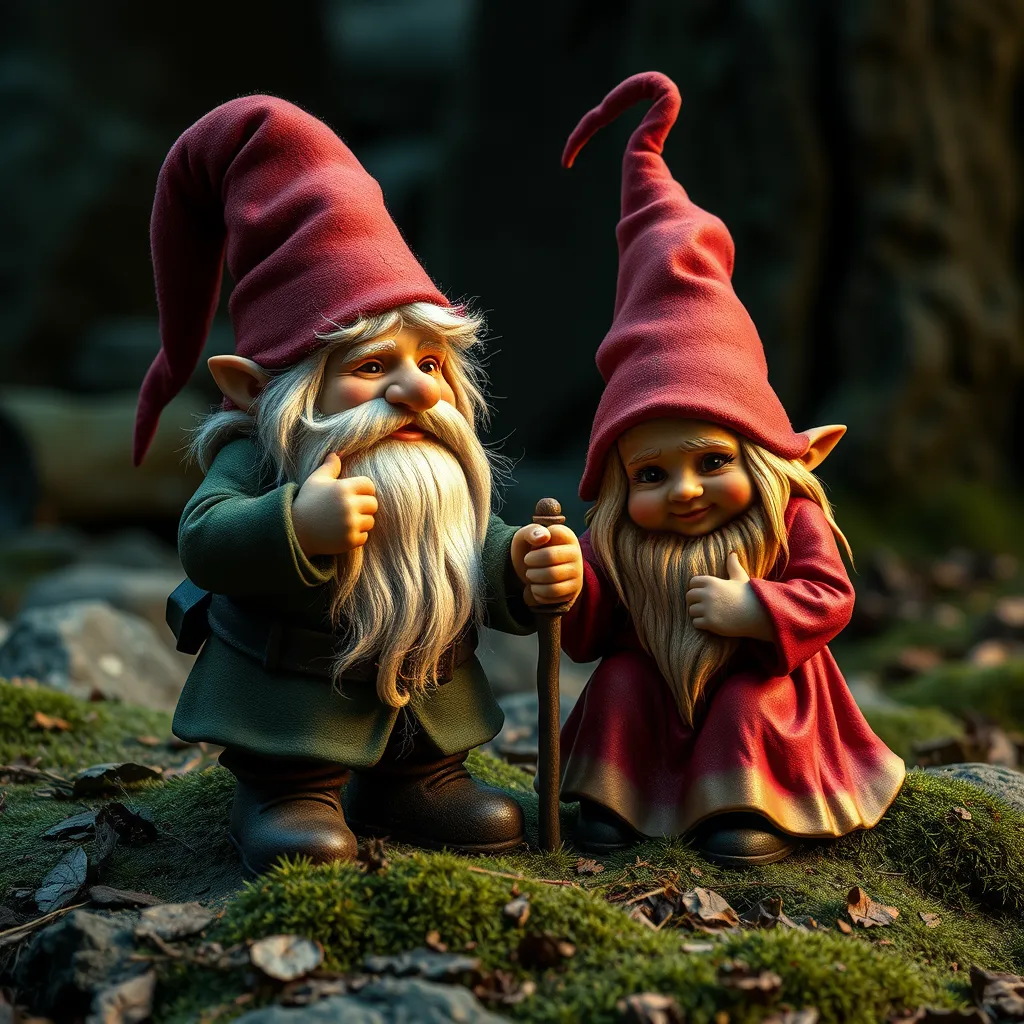The Gnome’s Relationship with Humans: From Helpful Spirits to Mischievous Tricksters
I. Introduction
Gnomes have long held a captivating place in folklore and mythology, often depicted as small, humanoid beings that inhabit the earth. Traditionally, these creatures are associated with the protection of nature and the prosperity of human endeavors. Over time, however, the perception of gnomes has evolved significantly, leading to their portrayal as both helpful spirits and mischievous tricksters. This article seeks to explore the intricate relationship between gnomes and humans, tracing their historical roots, cultural significance, and the transformation of their image through the ages.
II. Historical Roots of Gnome Lore
The origins of gnome mythology can be traced back to ancient civilizations, where beings resembling gnomes were often referenced in various mythological texts. In European folklore, gnomes were commonly viewed as earth spirits, guardians of the underworld, and protectors of hidden treasures.
As societies evolved, so did the role of gnomes. In early European folklore, they transitioned from being perceived solely as earth spirits to becoming household protectors. This shift laid the groundwork for their association with domestic life and farming communities.
III. The Role of Gnomes in Agriculture and Nature
One of the most enduring aspects of gnome folklore is their role as guardians of gardens and crops. In many cultures, gnomes were believed to watch over agricultural lands, ensuring bountiful harvests and protecting plants from harm.
The cultural significance of gnomes in farming communities is profound. They were often invoked in rituals and traditions, including:
- Planting ceremonies where gnomes were asked for assistance.
- Harvest festivals celebrating the bounty attributed to gnome protection.
- Folklore tales that reinforced the importance of respecting nature and its guardians.
IV. Gnomes in Popular Culture
Gnomes have become prevalent figures in literature and fairy tales, often portrayed as wise and benevolent beings. Their representation in art and media has further solidified their place in popular culture, evolving from ancient lore to modern interpretations.
The impact of gnomes on consumer culture is particularly notable. Garden gnomes, for instance, have become iconic symbols of home gardens, often associated with charm and whimsicality. Their commercialization has led to a variety of gnome-themed products, including:
- Decorative garden statues.
- Clothing and accessories featuring gnome motifs.
- Books and media exploring gnome adventures.
V. The Shift to Mischievous Tricksters
Over the years, gnomes have undergone a significant transformation in their portrayal, often depicted as mischievous tricksters. This shift can be attributed to various factors, including changing cultural narratives and the influence of popular media.
Numerous stories and legends highlight the playful mischief of gnomes, showcasing their tendency to play pranks on unsuspecting humans. Notable tales include:
- Gnomes hiding tools in gardens, leading to frustration for gardeners.
- Stealing food from picnics or celebrations.
- Creating illusions to confuse travelers in the woods.
This duality in gnome characteristics—combining wisdom with a penchant for mischief—adds depth to their folklore, inviting both affection and caution from humans.
VI. The Psychological and Symbolic Significance of Gnomes
On a psychological level, gnomes symbolize a connection to nature and the subconscious. They represent the idea of hidden knowledge and the mysteries of the earth, often encouraging individuals to explore their own inner depths and natural surroundings.
The appeal of gnome mythology in contemporary society lies in its whimsical nature and the nostalgia it evokes. Gnomes often embody innocence and playfulness, providing an escape from the complexities of modern life.
In modern psychological interpretations of folklore, gnomes are viewed as archetypes that reflect human desires for protection, comfort, and connection to the natural world.
VII. Gnomes in Contemporary Society
In recent years, there has been a resurgence of interest in gnome-themed products and media. This renewed fascination reflects a broader trend of seeking comfort and whimsy in a fast-paced world. Gnomes have found their way into community events and festivals, celebrating their cultural significance and engaging people of all ages.
The blending of traditional gnome lore with modern interpretations has resulted in diverse representations, including:
- Gnome-themed art installations.
- Children’s literature featuring gnome adventures.
- Social media trends celebrating gnome aesthetics.
VIII. Conclusion
The relationship between gnomes and humans has undergone a remarkable evolution, shifting from helpful spirits to mischievous tricksters. This journey reflects broader changes in cultural narratives and human perceptions of nature and the supernatural.
Gnomes continue to capture the imagination of people around the world, serving as symbols of nature, whimsy, and the complexities of the human psyche. Their ongoing presence in modern culture signifies an enduring fascination with folklore and a desire to reconnect with the mysteries of the earth.
As we look to the future, it is clear that gnome mythology will remain a vibrant part of human culture, inviting new interpretations and inspiring generations to come.
